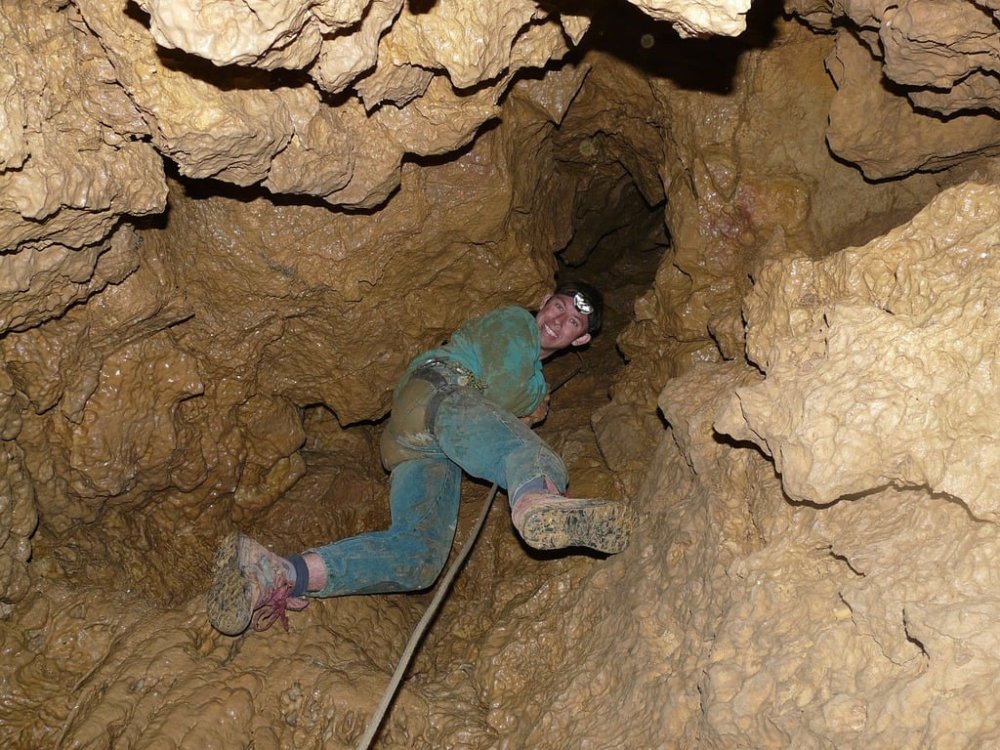Exploring the depths of a cave can be a thrilling experience, but to guarantee enjoyment and safety, the proper abilities and knowledge are needed. The Single Rope Technique (SRT) is a vital skill that every cave diver should possess. You can climb and descend steep or vertical passages using this method with the assurance that you’re doing it correctly. It is essential to comprehend how to set up and use SRT, regardless of your level of experience caving.
The technical aspects of rope work can be overwhelming for many people who are new to caving. It’s simple to worry about whether you’re using the equipment safely or tying the knots correctly. This fear is something that many beginners struggle with and can prevent you from enjoying your caving adventures to the fullest. But don’t worry, you’re not by yourself, and with the correct support and preparation, these difficulties are surmountable.
We’ll go over the fundamentals of setting up the single rope technique for caving in this article. Everything you require to set up and operate SRT safely will be covered, including the necessary equipment. You’ll feel more assured and prepared to explore those hidden underground worlds by the end of this guide.
Understanding the Single Rope Technique (SRT)
Climbers use the single rope technique (SRT) to use a single rope to navigate steep or vertical sections of caves. In contrast to other techniques that may require several ropes or ladders, SRT is valued for its effectiveness and simplicity. Anyone serious about exploring caves needs to know this technique because it makes it easy for cavers to ascend and descend.
Specialized tools are needed for SRT, such as a harness, ascenders, descenders, and of course a rope. The basic idea is to firmly fasten yourself to the rope so that you can raise or lower yourself as necessary. It is similar to rock climbing, but instead of ascending a sheer cliff face, you explore the enigmatic and occasionally difficult cave environment.
Essential Gear for SRT Setup
Before you begin, it’s important to have the right equipment. Here’s a list of what you’ll need:
- Harness: A caving harness is specifically designed for vertical work and is different from a rock-climbing harness. It sits lower on the body for better balance and comfort.
- Ascenders: These are devices that allow you to move up the rope. They grip the rope when you pull up and slide freely when you push down.
- Descenders: Used for controlled descents, descenders help you lower yourself down the rope safely.
- Rope: The rope is the backbone of the SRT setup. It should be a static rope, meaning it doesn’t stretch, which is crucial for safety in caving.
- Helmet and Headlamp: Safety first! A helmet protects your head from bumps, and a headlamp keeps your hands free while lighting your path.
- Carabiners and Slings: These are essential for connecting different pieces of gear and securing yourself to the rope.
Step-by-Step Guide to Setting Up SRT
1. Preparing Your Rope
The first step in setting up your single rope technique for caving is to prepare your rope. Make sure it’s the right length for the cave you’re exploring, and inspect it for any signs of wear or damage. Once you’ve checked the rope, find a secure anchor point—this could be a rock or a fixed bolt in the cave.
2. Tying the Knots
Next, you’ll need to tie a figure-eight knot at the end of your rope. This knot is strong and reliable, making it ideal for caving. Attach a carabiner to the knot and clip it to your harness. It’s important to double-check your knots and connections before proceeding.
3. Setting Up the Ascenders
Once your rope is securely anchored, it’s time to set up your ascenders. Attach the ascenders to the rope and connect them to your harness. Ascenders have teeth that grip the rope as you climb, allowing you to move upwards. Start by pulling yourself up with the ascenders, and sliding them up the rope with each step.

4. Managing Your Descender
When you need to descend, you’ll use a descender device. Attach it to the rope and your harness, then carefully lower yourself down by controlling the speed of the rope through the descender. Remember, descending too quickly can be dangerous, so take your time and stay in control.
5. Safety Checks
Before you start your climb or descent, always perform a safety check. Ensure that your harness is secure, your knots are tight, and your equipment is in good condition. A few minutes spent checking your gear can make all the difference in preventing accidents.
A Simple Guide to the Ascending Rope Technique.
Troubleshooting Common Problems
Even with the best preparation, things can sometimes go wrong. Here’s how to handle a few common issues:
- Rope Slippage: If your ascender or descender isn’t gripping the rope properly, it might be due to dirt or ice on the rope. Try cleaning the rope and the device, and make sure they are compatible.
- Knots Coming Loose: This can happen if the knots aren’t tied correctly or if the rope is too slick. Double-check your knots and consider using a stopper knot for added security.
- Feeling Stuck Mid-Climb: If you feel stuck or can’t move up or down, take a deep breath and assess the situation. It might be a simple case of repositioning your equipment or adjusting your weight distribution.

You Might Want to Ask
What is the best rope-pulling technique?
The ideal way to pull a rope varies often depending on the circumstances, but generally speaking, it works best to keep your body close to the rope and to exert force with your legs rather than your arms. This lessens the strain on your upper body and conserves energy. Make sure the rope is clear of obstructions and not rubbing against any sharp edges before venturing into a cave as this could lead to damage.
What is the fast rope technique?
Rather than caving, the fast rope technique is a way to descend a rope quickly that is frequently used in military or rescue operations. Gripping the rope with gloved hands, one must slide down without the aid of a descender or harness. Because safety is of the utmost importance when caving, a controlled descent with a descender is recommended over this quicker but riskier approach.
What is the 2:1 roping method?
The 2:1 roping method is a technique that uses a mechanical advantage to make pulling or lifting something easier. In this method, the rope is doubled back on itself, reducing the force needed to move an object or person by half. This method is often used in rescue situations or when extra effort is needed to ascend or descend in caving.
Conclusion
Mastering the single rope technique for caving is an essential step for anyone serious about exploring caves. With the right gear, proper setup, and a solid understanding of the technique, you’ll be well on your way to safely navigating the underground world. Remember, practice makes perfect, and the more you use SRT, the more confident and capable you’ll become. Caving is all about exploration and discovery, so don’t let the challenges of rope work hold you back—embrace them as part of the adventure.
Read about mastering the caving rappelling.
